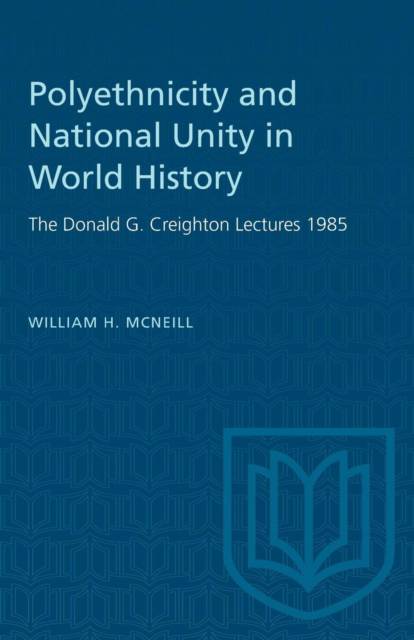
- Afhalen na 1 uur in een winkel met voorraad
- Gratis thuislevering in België vanaf € 30
- Ruim aanbod met 7 miljoen producten
- Afhalen na 1 uur in een winkel met voorraad
- Gratis thuislevering in België vanaf € 30
- Ruim aanbod met 7 miljoen producten
Polyethnicity and National Unity in World History
The Donald G. Creighton Lectures 1985
William H McNeillOmschrijving
Schools have taught us to expect that people should live in separate national states. But the historical records shows that ethnic homogeneity was a barbarian trait; civilized societies mingled peoples of diverse backgrounds into ethnically plural and hierarchically ordered polities.
The exception was northwestern Europe. There, peculiar circumstances permitted the preservation of a fair simulacrum of national unity while a complex civilization developed. The ideal of national unity was enthusiastically propagated by historians and teachers even in parts of Europe where mingled nationalities prevailed. Overseas, European empires and zones for settlement were always ethnically plural; but in northwestern Europe the tide has turned only since about 1920, and now diverse groups abound in Paris and London as well as in New York and Sydney. Age-old factors promoting the mingling of diverse populations have asserted this power, and continue to do so even when governments in the ex-colonial lands of Africa and Asia are trying hard to create new nations within what are sometimes quite arbitrary boundaries.
In demonstrating how unusual and transitory the concept of national ethnic homogeneity has been in world history, William McNeill offers an understanding that may help human minds to adjust to the social reality around them.
Specificaties
Betrokkenen
- Auteur(s):
- Uitgeverij:
Inhoud
- Aantal bladzijden:
- 96
- Taal:
- Engels
- Reeks:
Eigenschappen
- Productcode (EAN):
- 9780802066435
- Verschijningsdatum:
- 1/11/1986
- Uitvoering:
- Paperback
- Formaat:
- Trade paperback (VS)
- Afmetingen:
- 140 mm x 216 mm
- Gewicht:
- 131 g

Alleen bij Standaard Boekhandel
Beoordelingen
We publiceren alleen reviews die voldoen aan de voorwaarden voor reviews. Bekijk onze voorwaarden voor reviews.












